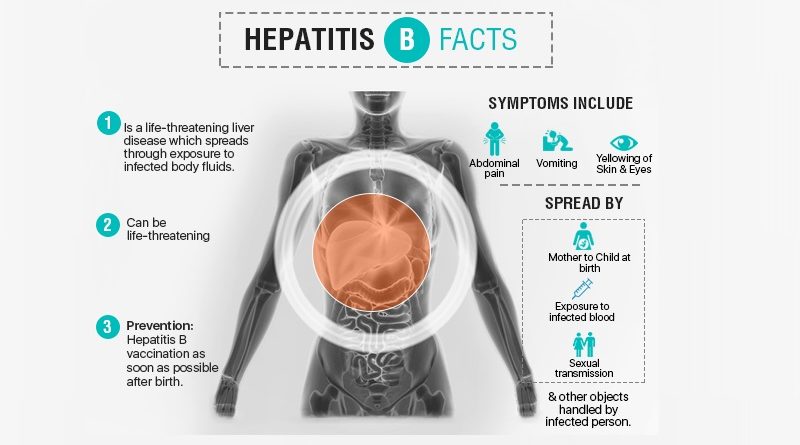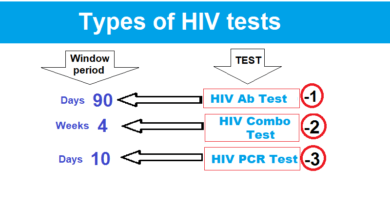Hepatitis B Infection: Causes, Transmission and Types
What is hepatitis B?
Many of us know what hepatitis B infection is and also know how dangerous it is. But some people don’t know specifically how the virus is transmitted from one person to another. They also don’t not know how to protect themselves from being infected with that dangerous virus.
What is hepatitis? It means inflammation of the liver, that progress into serious conditions leading to liver damage and failure. Many factors can cause it, as abuse of alcohol, toxins, and some medications. Some pathogens, most of which are viruses, can also be responsible. The most common causative viruses are A virus, B virus, and C virus. Virus A can cause a short-term infection, while both B and C can become chronic and lifelong conditions.
What is Hepatitis B
It is a liver disease that is caused by B virus (HBV), which affects the liver, causing acute and chronic liver disease. It can cause lifelong health problems, like liver cirrhosis, liver failure, and even death.
Transmission of the virus
It is commonly transmitted through sex. Also, it spreads from an infected mother to her baby during childbirth. It can spread through contact with blood. The virus can also spread by injection with contaminated needles or exposure to contaminated sharp objects.
Global prevalence of the disease
According to records, (the World Health Organization), about 300 million people lived with chronic hepatitis B infection in 2019. Furthermore, about 1.5 million new infections occurred every year. In 2019, about 820,000 deaths occurred due to cirrhosis and liver cancer.
Vaccines
There are safe and effective vaccines against the Virus, which can protect against infection.
Transmission of hepatitis B Virus?
- Unprotected sex: This can happen if you engage in unprotected sex. Be mindful of this risk. If this happens, you will probably be infected. Direct entry into your blood also poses a risk.
- Mother to baby: Also, an infected mother can pass the virus to her fetus during pregnancy or childbirth. Therefore, in severely endemic countries, the virus is common to spread from infected mothers to their child. So, chronic hepatitis B infection is widely spread in these countries among infants infected by their mothers.
- Occupational exposure to HBV: The virus is also transmitted by using contaminated needles and syringes (among health workers). Source for more reading.
- Contaminated sharp tools: Sharing contaminated needles and syringes spreads infection. This is common among people with a drug or alcohol addiction. Also, sharing contaminated sharp tools can spread infection. The virus is spread through sexual practices and is more common in people who have multiple sexual partners.
Can the virus live outside the body?
Short answer is Yes. The virus can survive outside the body for more than 7 days, given that circumstances are suitable for its survival. During this time, if a person was exposed to a contaminated subject, the infection can be transmitted. For instance, this can happen if someone is wounded by a nail cutter. (SOURCE)
Symptoms of Hepatitis B
Some people become infected with the virus and have no symptoms after infection, while others have Symptoms. In that case, symptoms are usually severe. They last for several weeks. The condition develops into acute liver failure and death. Some patients develop a chronic condition, (chronic hepatitis B). It is serious with long-term complications. These complications include cirrhosis, hepatocellular carcinoma, and death.
Common symptoms of the acute infection
The incubation period, (period from exposure to have symptoms) for hepatitis B virus is 30 to 180 days. The virus can be detected within 30 to 60 days after infection, called window period). Acute infection can persist and develop into chronic condition. In acute infection, symptoms are usually severe and last for several weeks
- Fever:
Fever is common symptom of acute hepatitis B. It can be moderate or high fever. You can take Tylenol (acetaminophen) or Paracetamol, it will help. - fatigue with Muscle and joint pains:
It is another common symptom of acute hepatitis. - Jaundice:
The skin and the whites of the eyes become yellow in color. Also, dark urine and Mud-colored stool can occur. - Gastrointestinal problems:
Some people feel stomach pain (in the right upper part of the abdomen). This pain is due to inflammation of the liver capsule. It can also affect the surrounding tissues.
Nausea and vomiting: Hunger can exaggerate nausea and stomach pain. Thus, you are advised to eat something between meals.
Appetite loss:
Appetite loss along with weight loss are common signs.

Diagnosis
Diagnosis is a crucial step in treating the disease and preventing it. Here’s how to Diagnose Hepatitis B.
Hepatitis B can be diagnosed by a simple blood test. It can be done at any laboratory or even at the doctor’s office. The initial test to start with is the HBsAg blood test. It can detect the presence of Hepatitis B Surface antigen. This detection is strong evidence for the infection. If the result is negative, hepatitis B is excluded. If positive, you need further tests in a medical laboratory. These tests will find out if it’s acute or chronic. They also determine whether it is active or non-active. These are called hepatitis B panel tests.
The panel tests
There are 3 parts to the hepatitis B panel tests. These parts will answer the following question: Are you infected with HBV? Is the infection acute or chronic? Can you infect others? Are you protected, (because you were vaccinated or have been infected before and recovered). Are you at risk of being infected? The test report confusing, so you need a doctor’s assistance to understand your the blood test results.
The blood test requires only one sample of blood. You and your doctor need all three test results to fully understand your status. This helps determine if you are infected, protected, or still at risk for infection. Your health care provider may ask to check your blood again in six months after your first visit. They do this to confirm your hepatitis B status.
Summary of tests and procedures:
- Antigen test: HBsAg blood test,
- Transient elastography: An ultrasound test to detect and evaluate the presence of liver damage.
- Liver Biopsy: Extracting a small piece of the liver tissue to assess the extent of damage to liver.
Vaccines
Hepatitis B infections acquired in adulthood lead to a chronic type of infection in about 5% to 10% of cases. In contrast, children’s infections can lead to a chronic condition in about 95% of patients. Therefore, vaccination of neonates and children is implemented in most of the countries, to achieve immunity in the future. The vaccine can prevent infection. It is usually given in 3 doses. The first dose is recommended within the first day of birth. The second dose follows after one month. Another, a third one, after 6 months, (as a booster). The vaccine can protect children for many years.
SOURCES




